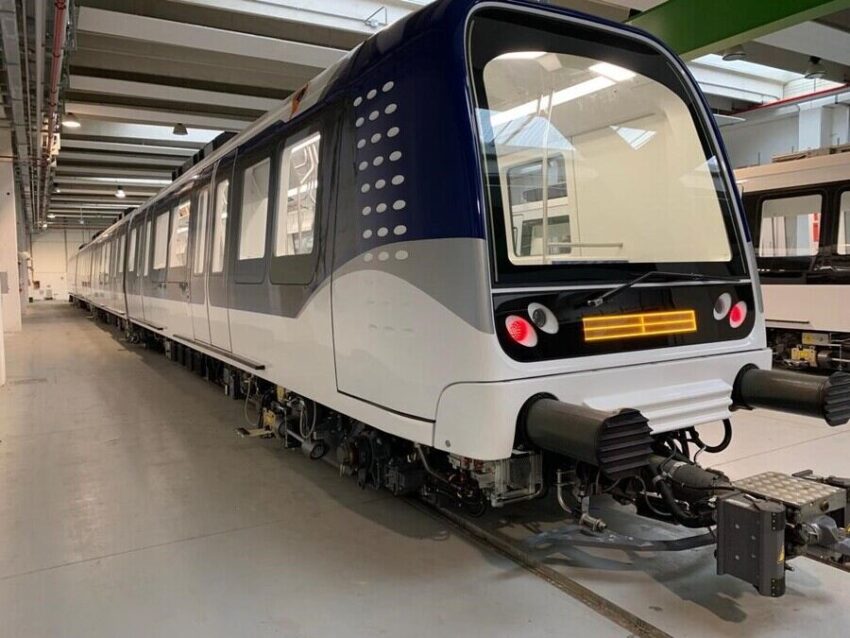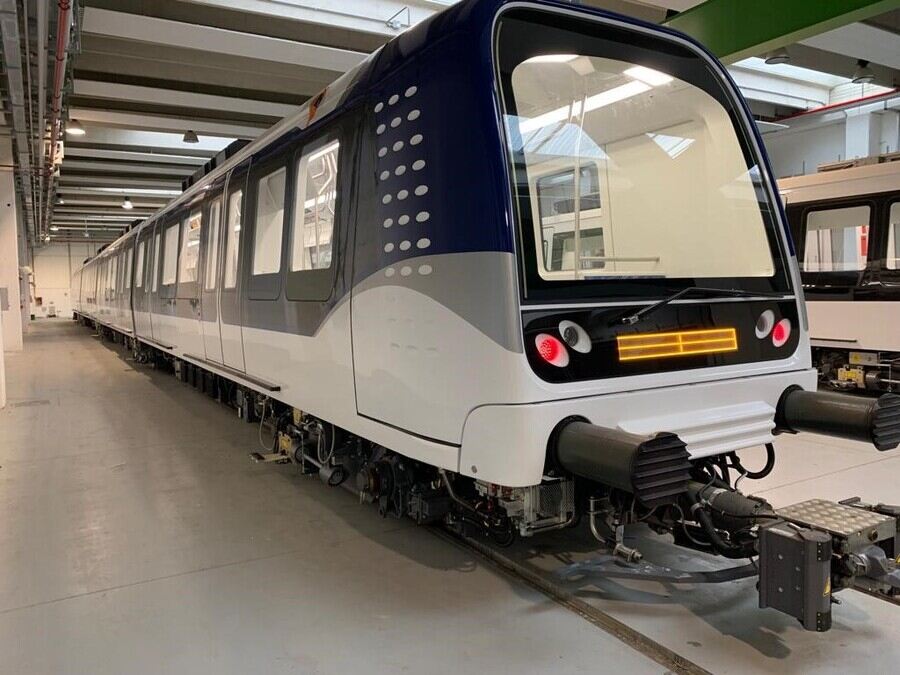Sunday, December 1, 2024

Thessaloniki opens Greece’s first driverless metro, powered by Hitachi Rail‘s advanced CBTC technology, cutting traffic and CO2 emissions while boosting urban mobility.
Thessaloniki, Greece’s second-largest city, today marks a momentous occasion in the history of public transport as it inaugurates the country’s first-ever driverless metro. This groundbreaking project, part of a larger urban transport modernization effort, is the result of a contract between the Greek government and Hitachi Rail, a leader in digital signalling and rail technology. The phase-one launch of the new metro line will revolutionize the city’s transport system, offering residents and visitors alike a modern, eco-friendly, and efficient solution to urban mobility.
The First Phase: A 9.6 km Journey to a Sustainable Future
The first phase of Thessaloniki’s new metro line stretches across 9.6 kilometers and includes 13 state-of-the-art stations. This initial stretch covers vital parts of the city and aims to drastically reduce congestion by providing a faster, more reliable alternative to traditional road transport. The project’s long-term vision is to connect Thessaloniki’s bustling city center with the city’s international airport, ensuring seamless connectivity for both residents and travelers.
Once completed, the metro is estimated to eliminate 56,000 cars from the city’s roads each day, helping to significantly reduce the daily traffic congestion that has long plagued the urban landscape. Beyond easing road traffic, the metro is also expected to have a substantial positive environmental impact. It will cut an impressive 77,000 tonnes of CO2 emissions annually, contributing to Greece’s broader climate goals and supporting the country’s push toward sustainable, green transport solutions.
Advanced Signalling and Cutting-Edge Trains
Hitachi Rail’s involvement in the Thessaloniki metro project goes beyond just providing rolling stock. The company has played a pivotal role in equipping the new line with its advanced Communication-Based Train Control (CBTC) system, a sophisticated signalling solution that enhances metro operations by allowing trains to communicate wirelessly with the infrastructure. This cutting-edge technology not only improves the efficiency of metro services but also ensures that trains can operate at shorter intervals, increasing overall capacity and reducing waiting times for passengers.
The first phase of the metro line will be served by 18 new trains, with an additional 15 trains set to be delivered as part of a subsequent contract. These trains, manufactured in Hitachi Rail’s Reggio Calabria factory in Italy, feature four carriages, making them approximately 51 meters in length, with the ability to transport up to 450 passengers per train. The modern design of the trains is paired with the advanced technology of the CBTC system, ensuring a smooth, safe, and efficient travel experience for passengers.
A Global Milestone for Hitachi Rail’s Autonomous Metro Solutions
The Thessaloniki metro represents another significant milestone for Hitachi Rail in its global expansion of driverless metro systems. The company has already delivered autonomous metro solutions in a variety of cities, including Milan, Taipei, Lima, and Copenhagen. With its expertise in CBTC technology and its ability to integrate advanced digital signalling with next-generation trains, Hitachi Rail is helping to shape the future of urban mobility across the world.
As cities worldwide continue to grapple with issues like traffic congestion, pollution, and the need for more sustainable public transport solutions, driverless metro systems like the one in Thessaloniki are seen as key to addressing these challenges. By offering an efficient, safe, and environmentally friendly mode of transport, Thessaloniki’s new metro will set a benchmark for other cities to follow in the coming years.
Archaeological Discoveries and Metro Construction
While the metro project focuses on cutting-edge technology and sustainable transport, it has also respected the rich cultural and archaeological heritage of Thessaloniki. During the construction of the metro, workers uncovered several important archaeological finds, including the discovery of a decumanus maximus, an ancient Roman road. These findings have been preserved and will be put on public display within the metro stations, allowing passengers to experience a unique blend of modernity and history.
The construction of the metro also involved the creation of a 55,000-square-meter depot in the Pylea area, further enhancing the city’s transport infrastructure. The careful planning and construction of the metro network ensure that it will not only serve the present needs of Thessaloniki’s residents but will also support the city’s future growth and development.
Looking Ahead: The Future of Thessaloniki’s Metro System
With phase one of the metro now operational, the focus shifts to further expanding the network to meet the city’s growing needs. Plans are already in place for the extension of the line, which will add an additional 4.8 kilometers and five more stations. This extension will eventually provide a direct connection between the city center and Thessaloniki International Airport, making it easier for travelers to access the airport and improving overall connectivity for the city.
The completed metro line is expected to be a game-changer for Thessaloniki, providing a fast, reliable, and environmentally friendly alternative to private cars. As more cities around the world look to emulate Thessaloniki’s success, the city’s metro will serve as a model for other urban centers striving to implement sustainable and efficient public transportation systems.
Thessaloniki’s Driverless Metro: A Step Toward a Greener, More Connected Future
The inauguration of Thessaloniki’s first driverless metro marks a new chapter in the city’s transport evolution. With its state-of-the-art CBTC technology, sleek and modern trains, and focus on sustainability, the metro is set to reduce congestion, improve air quality, and create a more efficient transport system for the citizens of Thessaloniki. The collaboration between Hitachi Rail and the Greek government has not only delivered a modern transportation solution but has also demonstrated a shared commitment to creating a greener, more connected future for Greece’s urban centers.
As the city looks toward the completion of the full metro network, Thessaloniki’s new transport system will continue to be a catalyst for positive change, paving the way for other cities in Greece and beyond to embrace the potential of driverless metro technology and digital rail solutions.
Thessaloniki’s new metro system, powered by Hitachi Rail’s cutting-edge CBTC signalling and advanced trains, is a transformative step for the city’s urban mobility. It represents Greece’s first-ever driverless metro, promising to reduce congestion, improve air quality, and connect key areas of the city, including the airport. With a focus on sustainability and innovation, Thessaloniki is setting a new standard for modern urban transport solutions.

